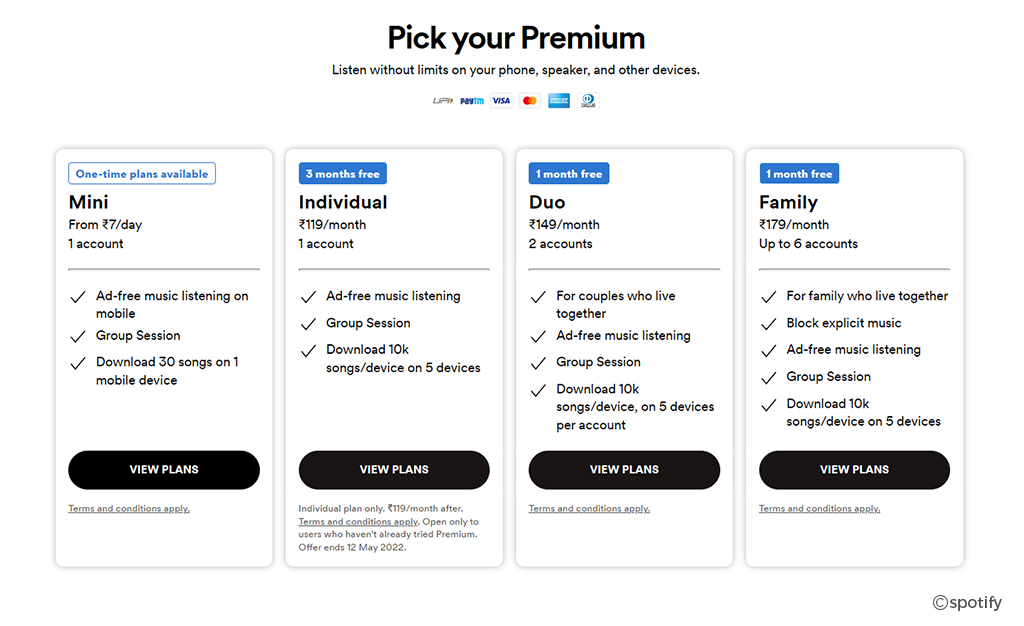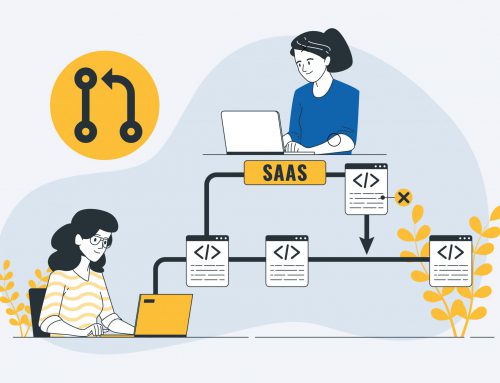Table of Contents
There has been a 3x increase in the SaaS market in the last five years. The global revenue for the SaaS industry expects to reach $171 billion by the end of 2022. The traditional on-premise model is quickly becoming a thing of the past. This is merely due to the great account of advantages the Software-as-a-Service (SaaS) model offers.
99% of companies on the market adopt at least one SaaS solution to run their business. – ThriveMyWay
In this post, we’ll explore how SaaS-based software solutions or Cloud Computing solutions can help your business improve its efficiency and productivity and help you grow consistently and effectively. Learn how you can utilize these advantages of the SaaS model for your business by understanding the process of developing a powerful SaaS product.

The Ultimate Checklist for Building An Incredible SaaS Product
Get your free copy
What is SaaS Product Development?
SaaS (Software as a Service) product development is a virtualized, ready-to-use environment designed with a flexible and engaging User Interface. The SaaS solution represents a cloud-based setup for developing software without extra coding, you’ll require only a tailored design and frontend features.
Software-as-a-service product is an Internet software product that any user can access without installing anything on your device.
Simplistically, it is a cloud-hosted application that can be accessed on multiple platforms like smartphones or web interfaces.
It provides important characteristics like customization, remote accessibility, scalability, and easy maintenance for a business to grow.
Most importantly, SaaS products do not require any special instrumentation. It is easier for a user to work with a SaaS model of software.
Among the enterprises, 37% use Cloud services as it provides a great level of flexibility.
Due to its popularity and usability, SaaS development has covered almost every sector of the industry and SaaS-based products are in huge market demand.
Types of Cloud Computing Services (IaaS, PaaS, SaaS)
Three main types of Cloud computing are available:
- Internet-as-a-Service (IaaS)
- Platform-as-a-Service (PaaS)
- Software-as-a-Service (SaaS)
All three models explain the modern yet different ways to describe the utilization of the Cloud for business.
Each model offers specific functionality that is important to understand as a business.
The difference between the Cloud services models is very well explained by Albert Barron in his Pizza-As-A-Service analogy.
IaaS
The Infrastructure-as-a-Service model is also understood as Cloud infrastructure services.
The business purchases resources on-demand, despite spending more to buy and manage hardware.
This model can be used if you plan to pay-as-you-use to fit your budget.
Well-known examples include Amazon EC2 and Google Cloud Storage.
PaaS
The Platform-as-a-Service model is also understood as cloud platform services.
The development provides an internet-accessible framework, software, and tools that are required to build an app or software.
The model fits well with the businesses that do not want to take any responsibility themselves but still create a unique application.
Some well-known examples include Google App Engine and Windows Azure.
SaaS
The Software-as-a-Service model is also understood as Cloud application services.
The vendor manages data, servers, and storage without any other requirement.
Here, you do not require to install or run the software on your computer or mobile device.
The only requirement is the Internet on the device and you can have easy access to the services.
Some well-known examples include Google Apps and Salesforce.com
Benefits of Software-as-a-Service
- SaaS is mainly sold on a subscription basis that consists of upgrades, maintenance, and a degree of client support. This makes it highly affordable. And as the subscriptions can be managed monthly, there are no high up-front service costs applicable in this specific model.
- The conventional software solutions take weeks or months to implement and deploy. On the other hand, SaaS solutions do not need any tool to be enabled, only a web browser and the internet. This makes it a ready-to-go solution.
- SaaS also nullifies hardware maintenance and software version up-gradation at the user-end. The SaaS service provider handles all this for you so you can give more of your attention to growing your business.
- The complexity of IT infrastructure is looked upon by the service provider. This again will keep you free to achieve greater heights in your business.
- SaaS ensures the performance level of your software and even could be penalized if fail.
- SaaS also enables automated diligent backups without user involvement. It takes care of data integrity and recovery.
- As you just need the internet and browser to work, this allows it to be used from anywhere. Of course, this becomes the greatest advantage.
Let us now dive into the understanding of developing a SaaS product in various steps.
SaaS Product Development Process
- Concept Formulation
- Market Review
- ROI Insights
- Technical Aspects
- Hire Expert Developers
- Create MVP
- Testing and Debugging
- Market Launch
- Maintenance
#1 Concept Formulation
The main goal of any business is to bring an easy-to-use solution to any particular issue of the user. It thus becomes crucial to initially lookout for the problems faced by the users and then, come up with an innovative idea.
After good research on targeted customers’ inconvenience, you formulate the SaaS solution that can make things simpler and affordable at times.
Let’s take a successful example. Netflix is one of the biggest entertainment and media brands all over the globe. It is interesting to know that the business started by renting DVDs over mail, in 1997.
With the changing audience, they upgraded with streaming videos, and today they promise to provide access to diverse and extensive content on-demand with 24/7 accessibility.
#2 Market Review
The next big thing you can do after formulating a SaaS model is to conduct a market competitors review that involves your idea.
Here is the list of features you need to look for:
- Designing
- Functionality
- Marketing
- Pricing
- Customer Feedback
It is obvious to give good attention to the market leaders. You can learn from their experiences and understand how they get successful.
Like Netflix provides a variety of features needs to know other such services that are available in the market. This will help in enhancing the user benefits of your business.
As you might know, Netflix already has tough competition with other video streaming services like Amazon Prime Video, Disney Plus, and HBO Max. All these businesses keep a good eye on each other to stay in the competition.
The best way to grow out of competition will require you to modify some parameters that can benefit your business directly. These parameters can be the price of your service, selection of a narrower niche of your audience, or even the development of a whole new solution.
#3 ROI Insights
This is another essential point to keep in mind while developing a SaaS product. It is mainly because the pricing strategy can make or break your SaaS product.
There are no must-pricing rules for your SaaS business. As the SaaS model has evolved it has allowed the emergence of various pricing models.
Freemium model – This allows the usability of basic features for free. It then provides the advanced features with account up-gradation i.e. premium user. The upgrade can also benefit the user as it removes advertisements. The product makes money for you by converting free users to paid users with advanced features to access with one-time or monthly payments.
Flat-Rate or On Subscription – This model has unanimous pricing for its services for everyone. It is one easy-to-implement and sells model for a SaaS product. Here the users subscribe to the SaaS product on a monthly or yearly basis which will allow them to have access to the complete set of product features throughout their tenure.
Usage-Based Model – In this model, users have the flexibility to only pay for the features that they use. In a complete set of features of your SaaS product, not all would be required by individual users. This makes it easy for the user to select and pay for the features that are required of them and not pay extra for the features that they don’t use.
Composite model – In this model, your SaaS product will have a mixture of pricing methods depending on the feature requirement. For instance, a SaaS product can offer free access to features and also keep the ads, and can also ask a user to subscribe for premium features. #4 Technical Aspects
#4 Technical Aspects
The selection of the technology stack is just like selecting the building material of your house. The technologies you select in building up your SaaS product will run your web application through the internet.
The making of a SaaS product should involve not all but at least one of the following technologies to make your product a next-gen product. 
The functionality and appearance of your SaaS product rely on the basic build-up of technicalities. The various components involved are:
The frontend and backend of your SaaS web appearance need to select a systematic and wise usage of the languages like HTML5, React JS, Angular JS, Vue JS, .NET, PHP, Python, Node JS, and Java.
The frameworks that are required to administer, create and control your SaaS web application could be Codelgniter, Laravel, Zend, and Microsoft.
As the server facilitates the communication between the user and the application, you need to choose it according to the functional requirements of the SaaS product development. The widely used cloud computing servers are AWS and Azure.
Depending upon your SaaS product requirement the databases you can select are relational or non-relational. They work to store and organize your web product. The widely used databases include MS SQL, MySQL, NoSQL, Oracle, Amazon DynamoDB, and MongoDB.




























